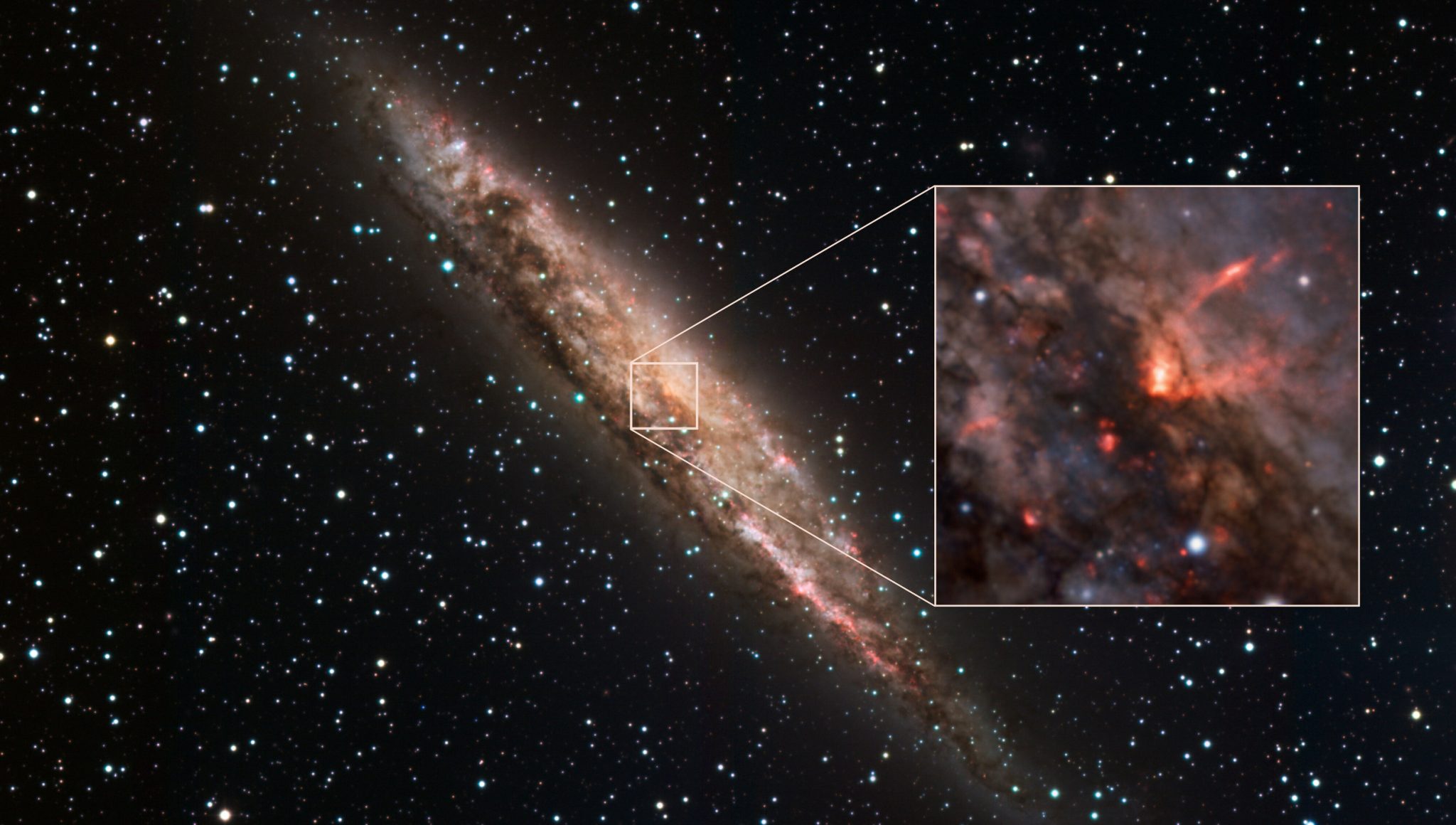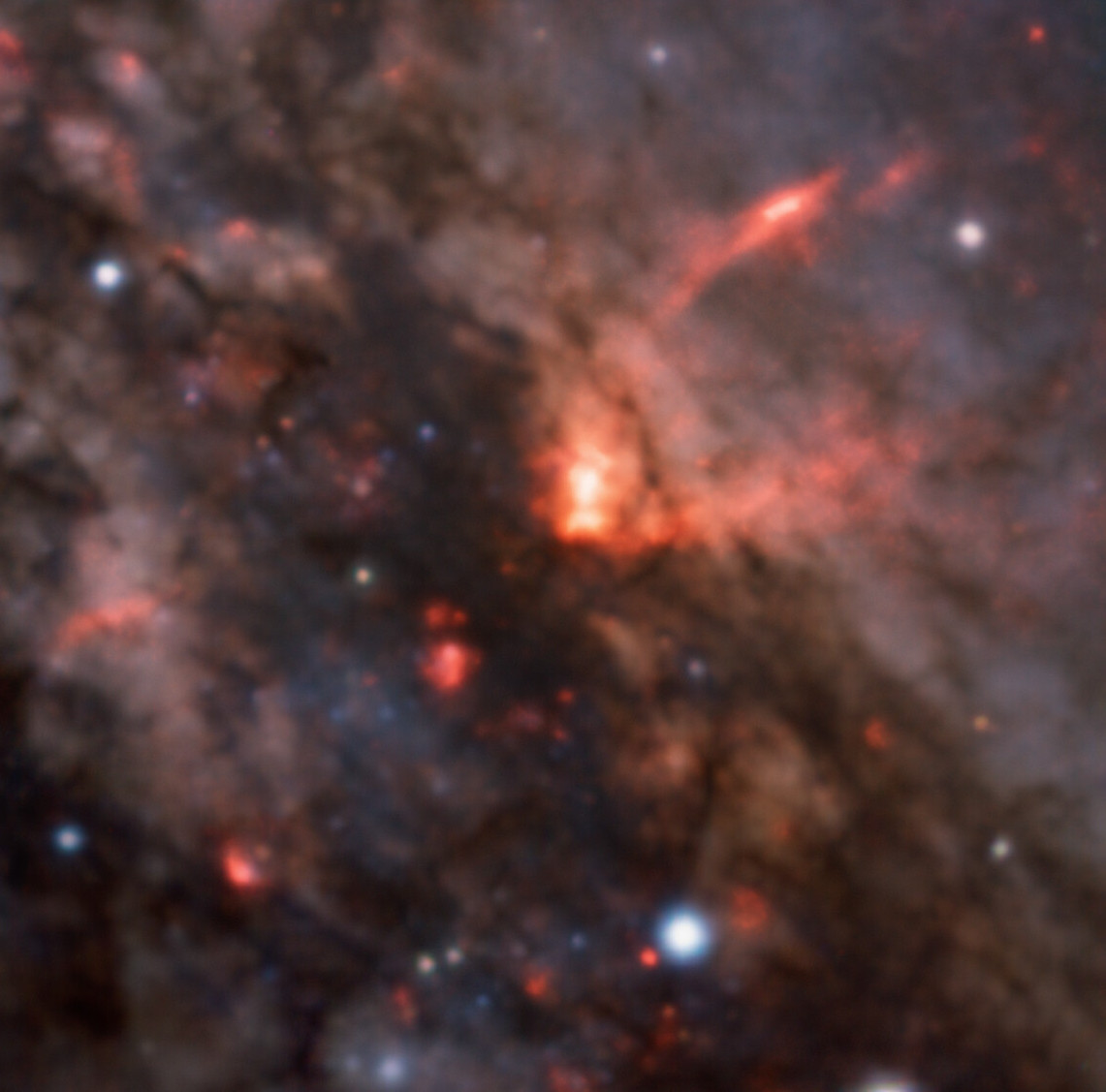At a distance of 12 million light-years from Earth is the galaxy NGC 4945, which has come to attention with an unexpected event. Using the Very Large Telescope (VLT) in Chile, astronomers could see how the supermassive black hole at its center not only absorbs matter, but also creates powerful cosmic winds that carry gas and dust far beyond the galaxy. This phenomenon, similar to a cat “playing” with its own food, could change the way we think about the evolution of galaxies.

A rebel black hole
Most galaxies, including our Milky Way, have supermassive black holes at their heart. However, unlike the “calm” monster of our galaxy, the black hole in NGC 4945 was incredibly active. It is constantly absorbing matter but, ironically, simultaneously ejecting some of it at the same time in the form of high-speed winds. These streams, shown in the VLT image as bright cone-shaped jets, are moving at such a speed that gas and dust leave the galaxy before the hole can absorb them.
“At the very center of almost every galaxy is a supermassive black hole. Some of them, like the one at the center of our Milky Way, have been sitting “on a diet” for a long time. But the supermassive black hole NGC 4945 is “voracious” and absorbs huge amounts of matter, some of which it ejects – like a black hole rebelling against itself,” the European Southern Observatory (ESO) explained.

The VLT photo shows how the active galactic core is covered by clouds of dust and gas that swirl around the black hole. However, radiant winds filled with ionized matter break through these layers to form spectacular light cones. The frame is complemented by a wider image of NGC 4945 taken by the MPG/ESO telescope, allowing us to appreciate the scale of the phenomenon.
Mysterious accelerating winds
Data from the MUSE instrument on the VLT telescope have revealed unexpected behavior of galactic winds. Typically, such streams slow down as they move away from the center of the galaxy. In NGC 4945, however, they are on the contrary accelerating, gaining speed in interstellar space. This phenomenon may be key to understanding how black holes regulate the growth of their galaxies.
Fast winds carry away the material needed to form new stars, thus freezing star formation. In addition, they create a kind of equilibrium: by absorbing matter, the hole simultaneously restricts its own nutrition, preventing overgrowth.
Search for voracious black holes
A study published in Nature Astronomy brings science closer to unraveling the mechanisms that form galaxies. “These winds are not just a spectacular phenomenon. They influence the way galaxies change over billions of years, and even the fate of the Universe,” ESO emphasizes.
The next step will be to study other galaxies with active nuclei to see if such “playing” of a black hole with matter is a common phenomenon. In the meantime, NGC 4945 remains the most striking example of how cosmic monsters can be both creators and destroyers.
Earlier we reported on whether it was possible to survive in a black hole and come out the other side.
According to ESO


